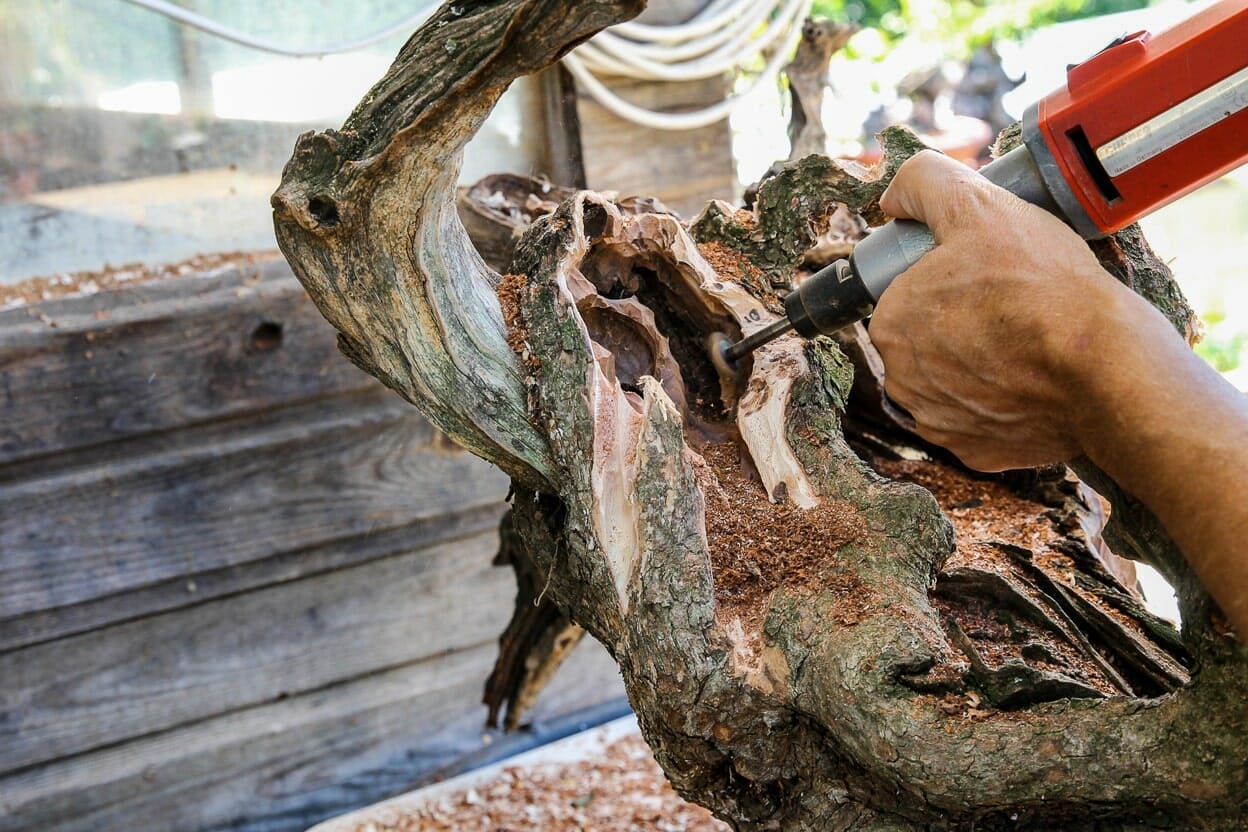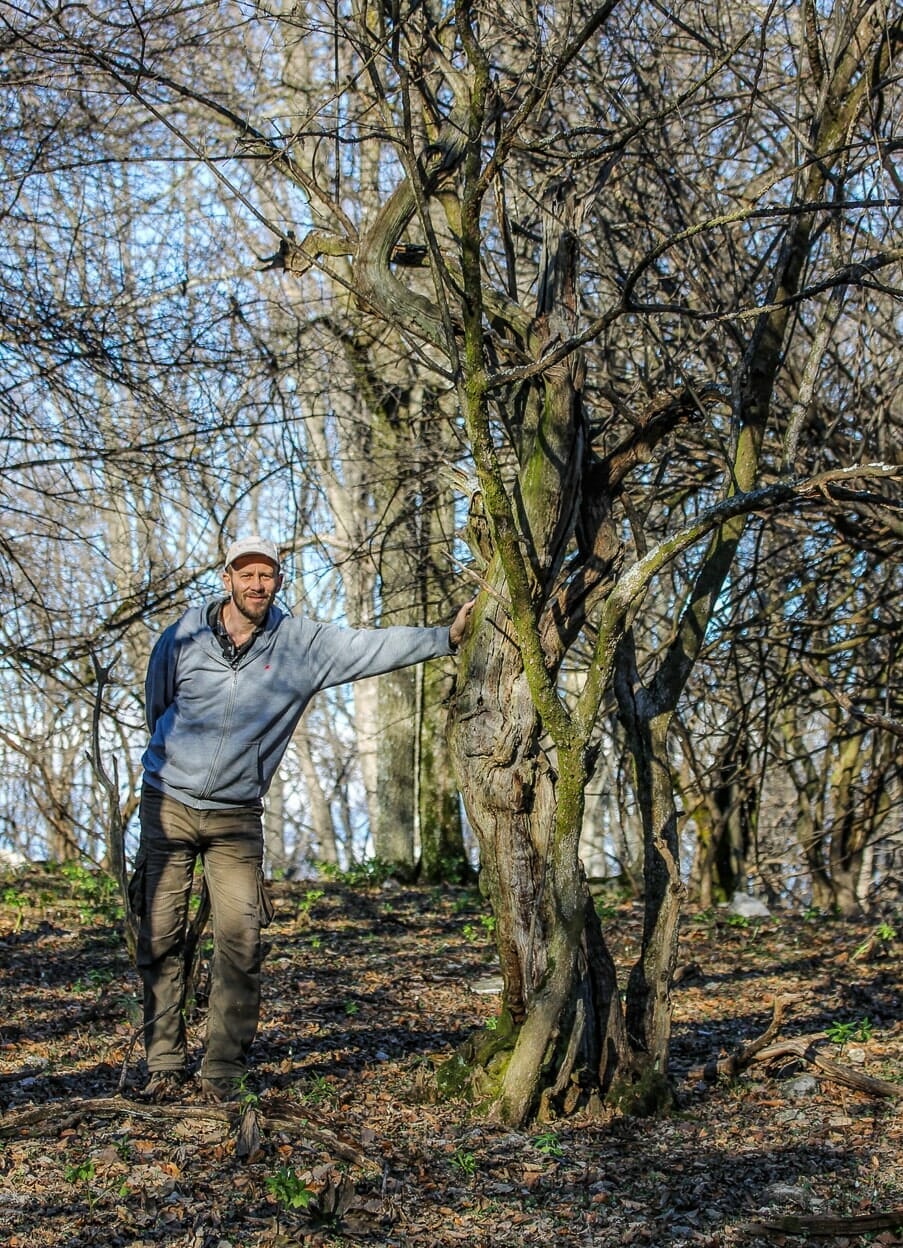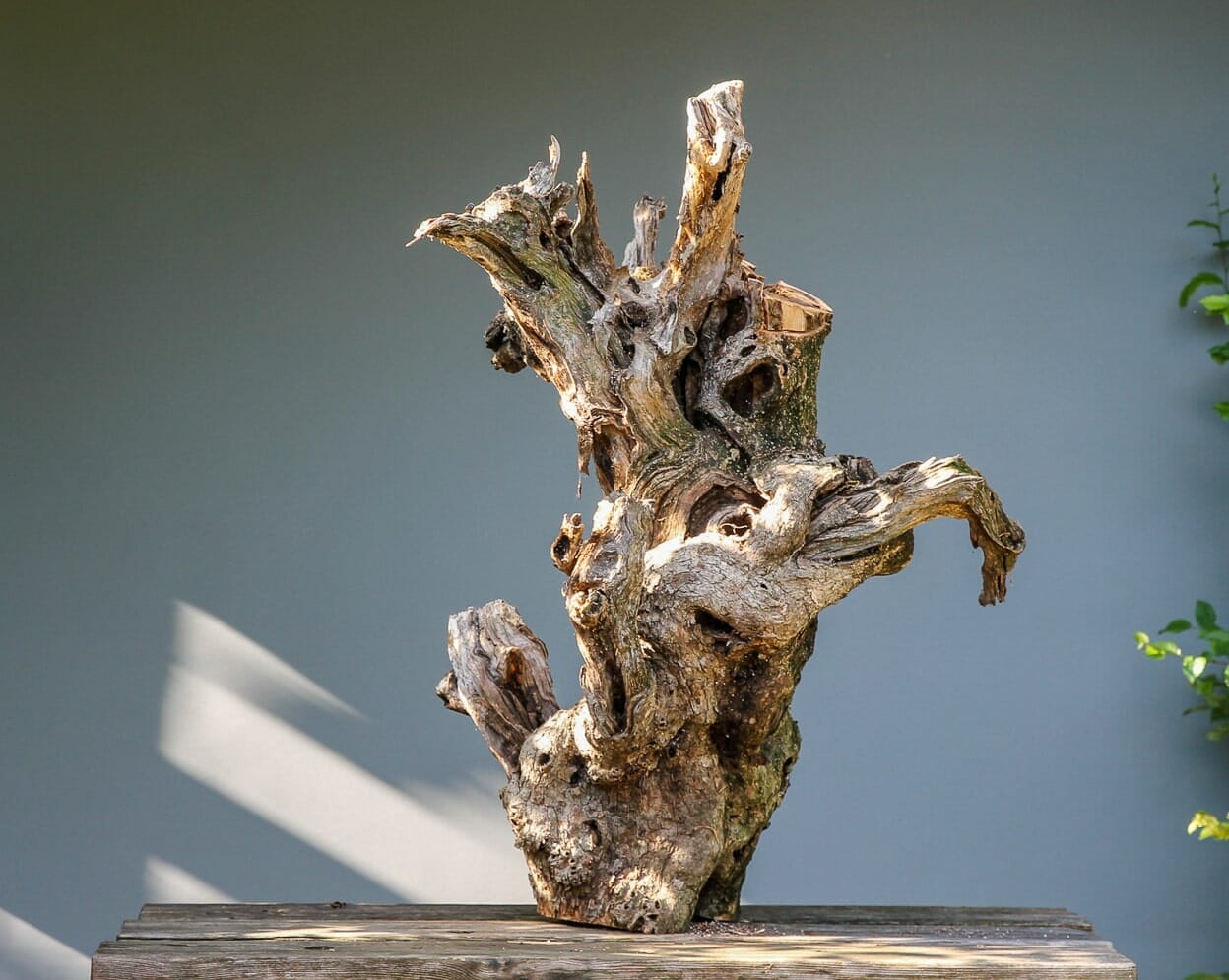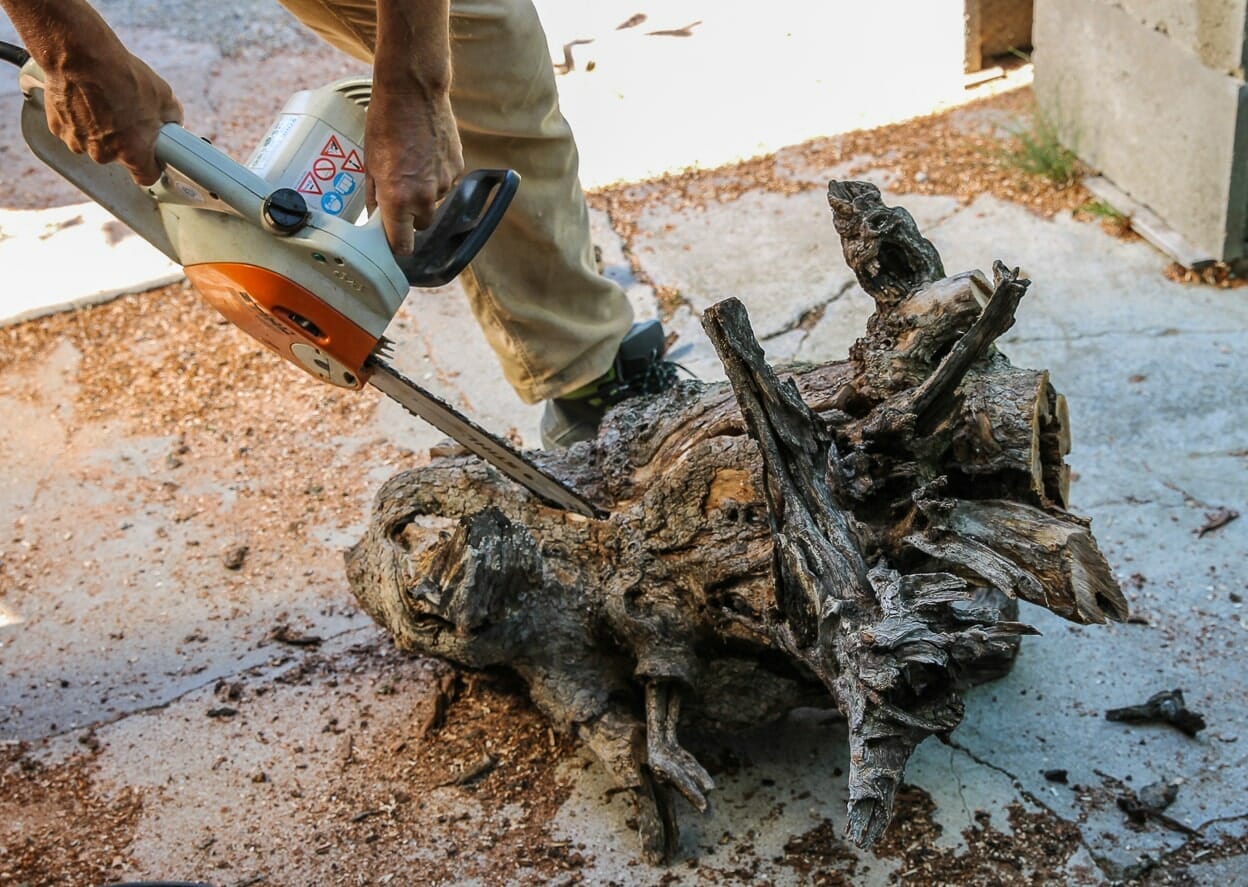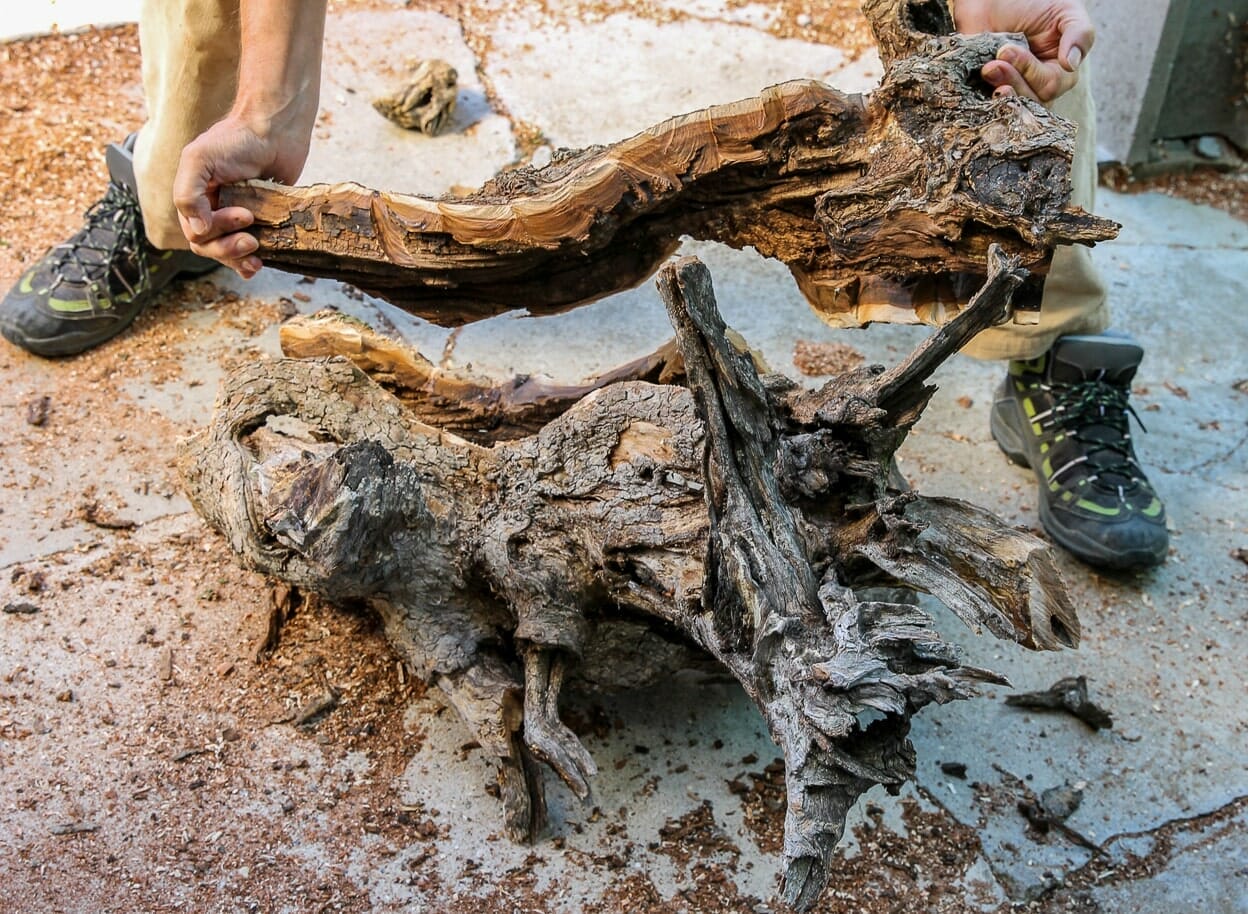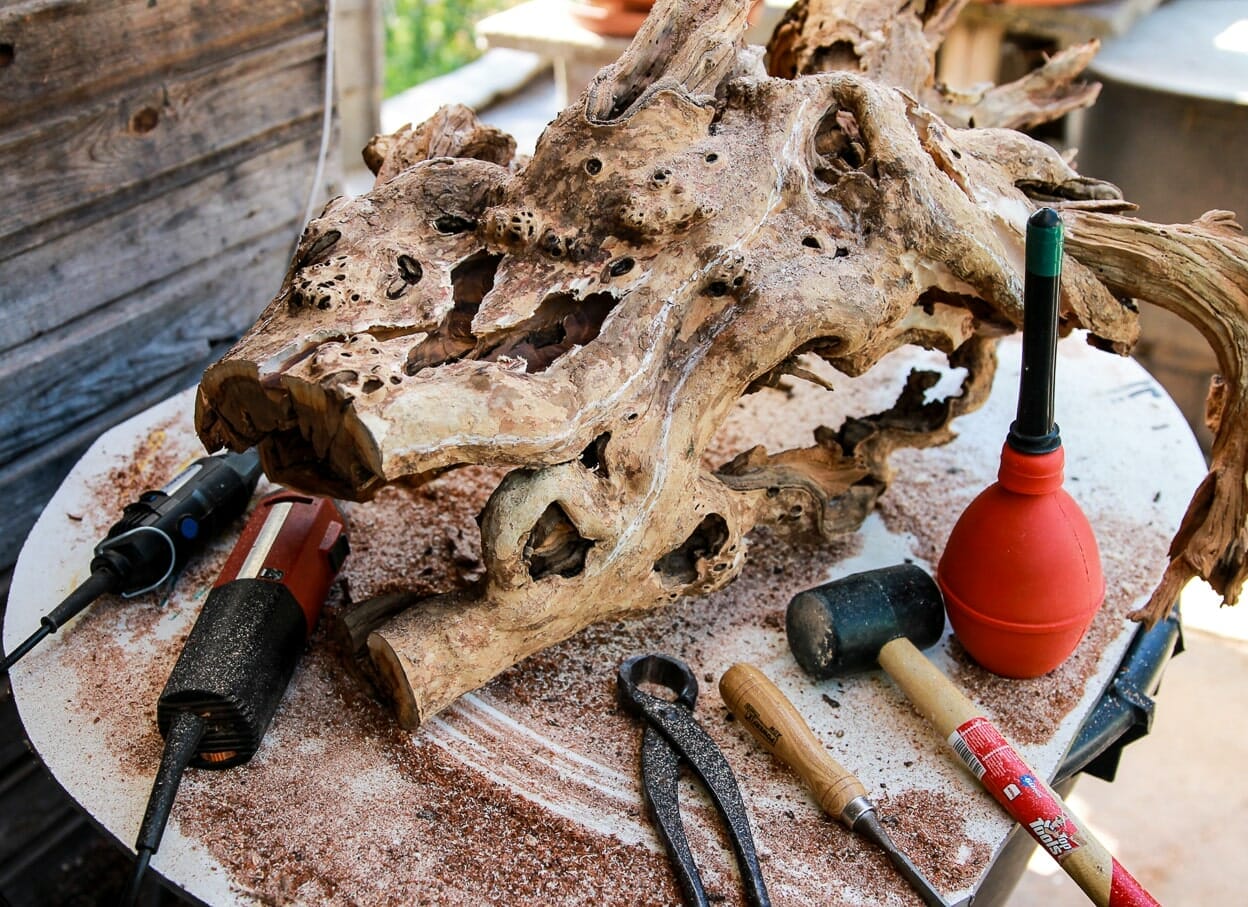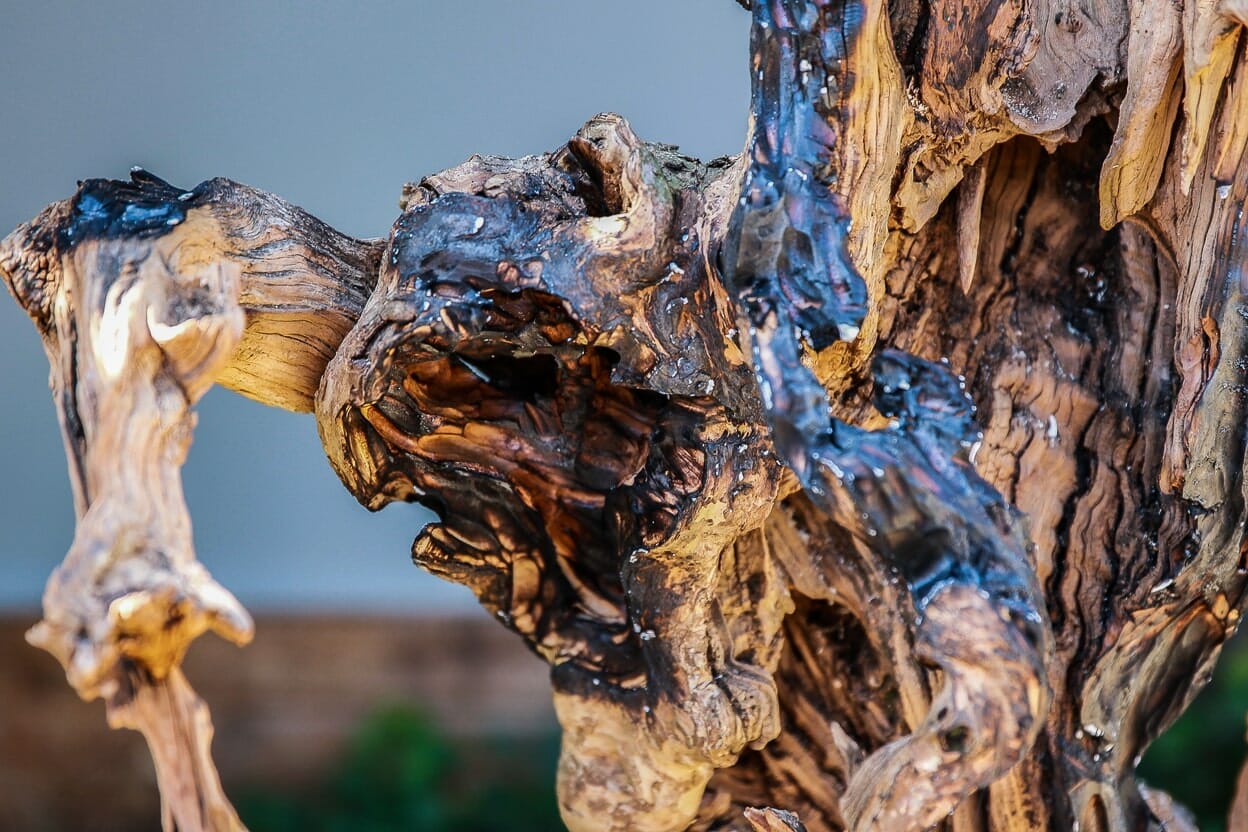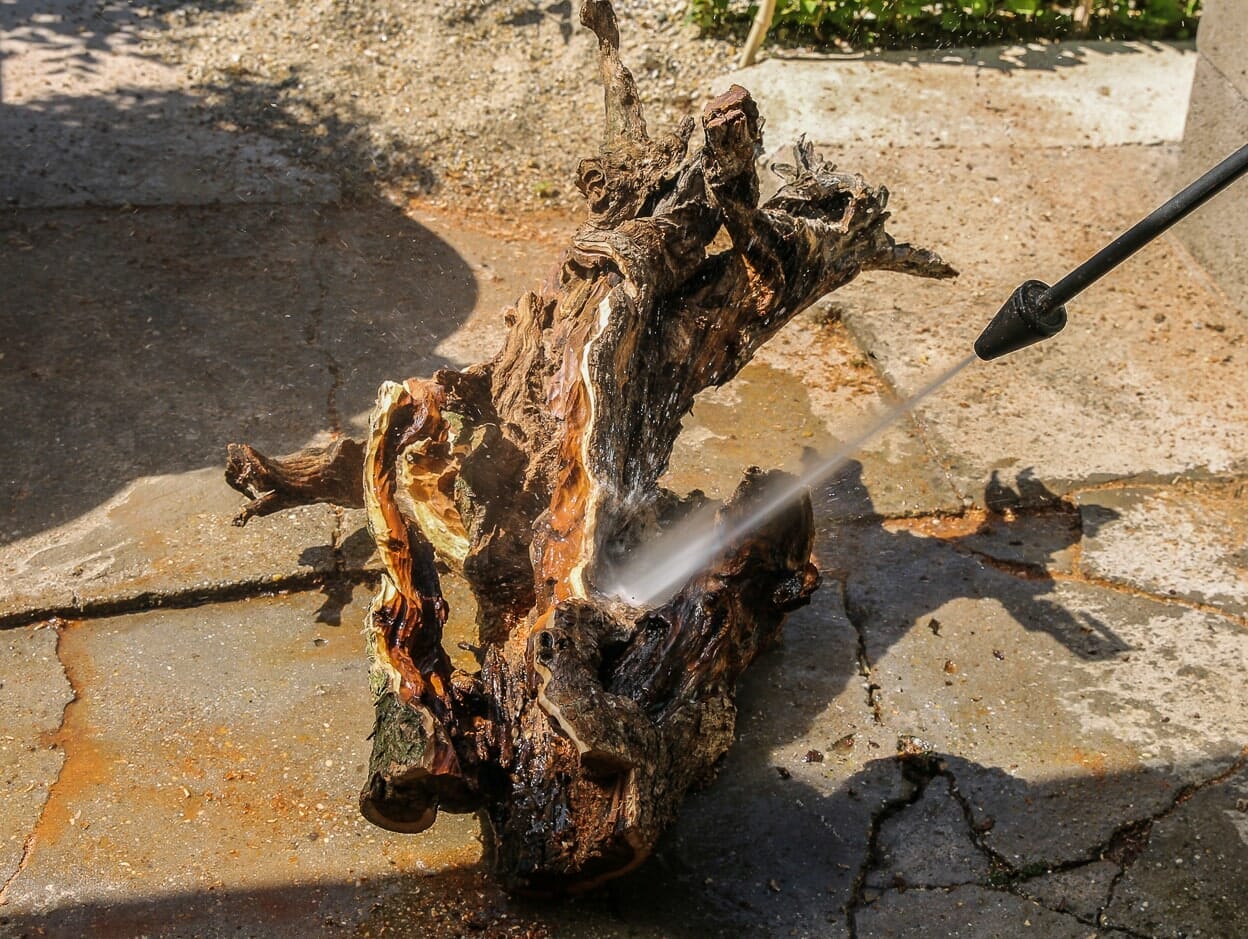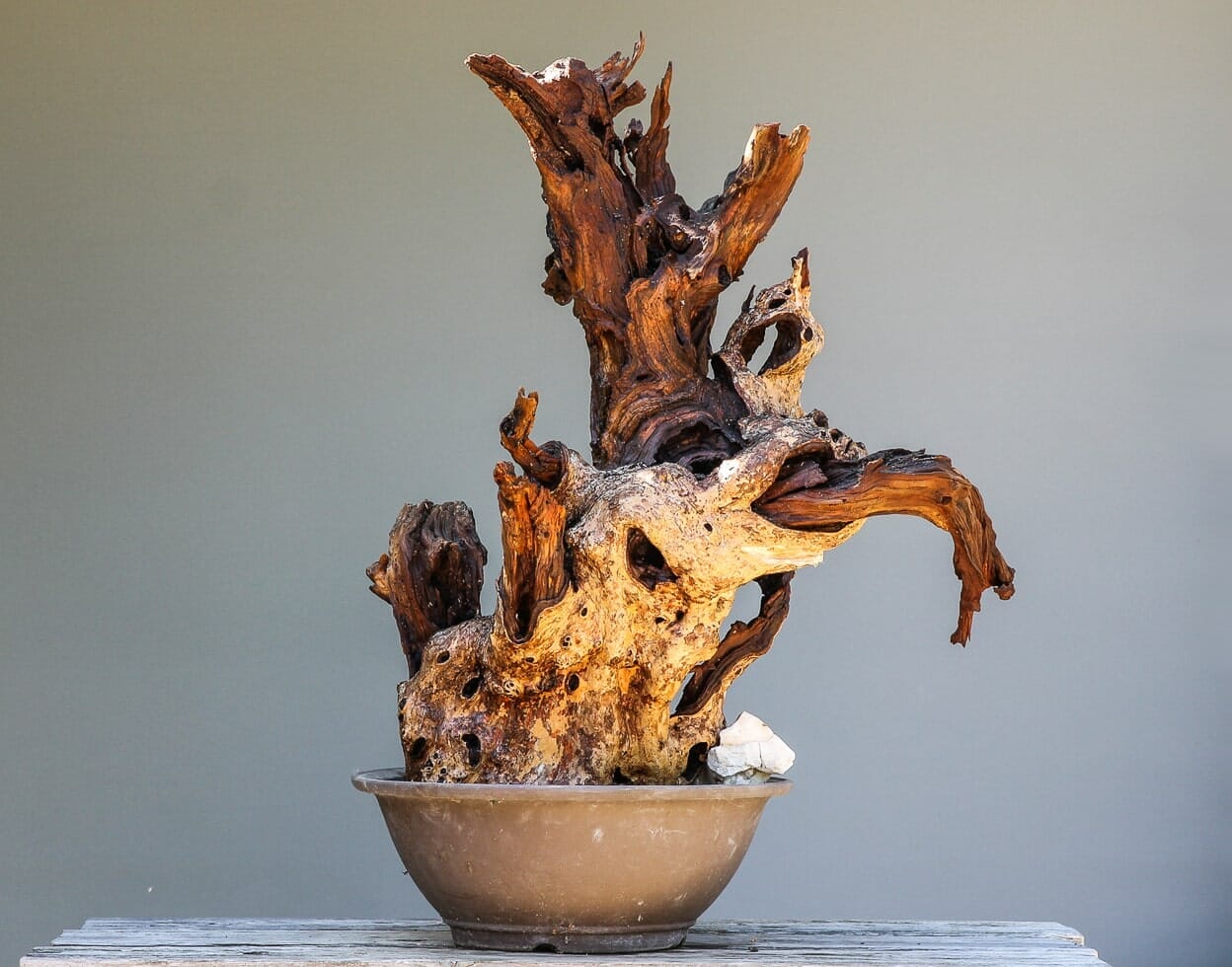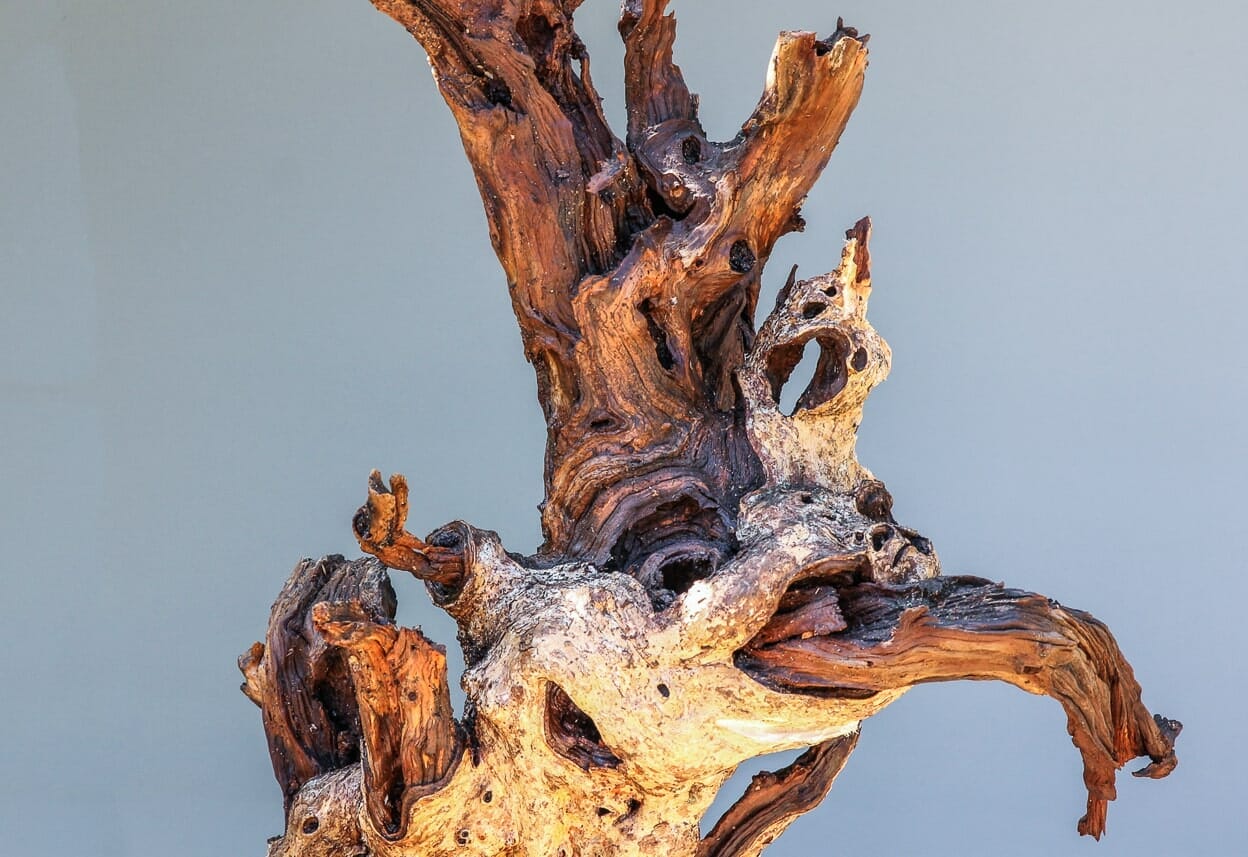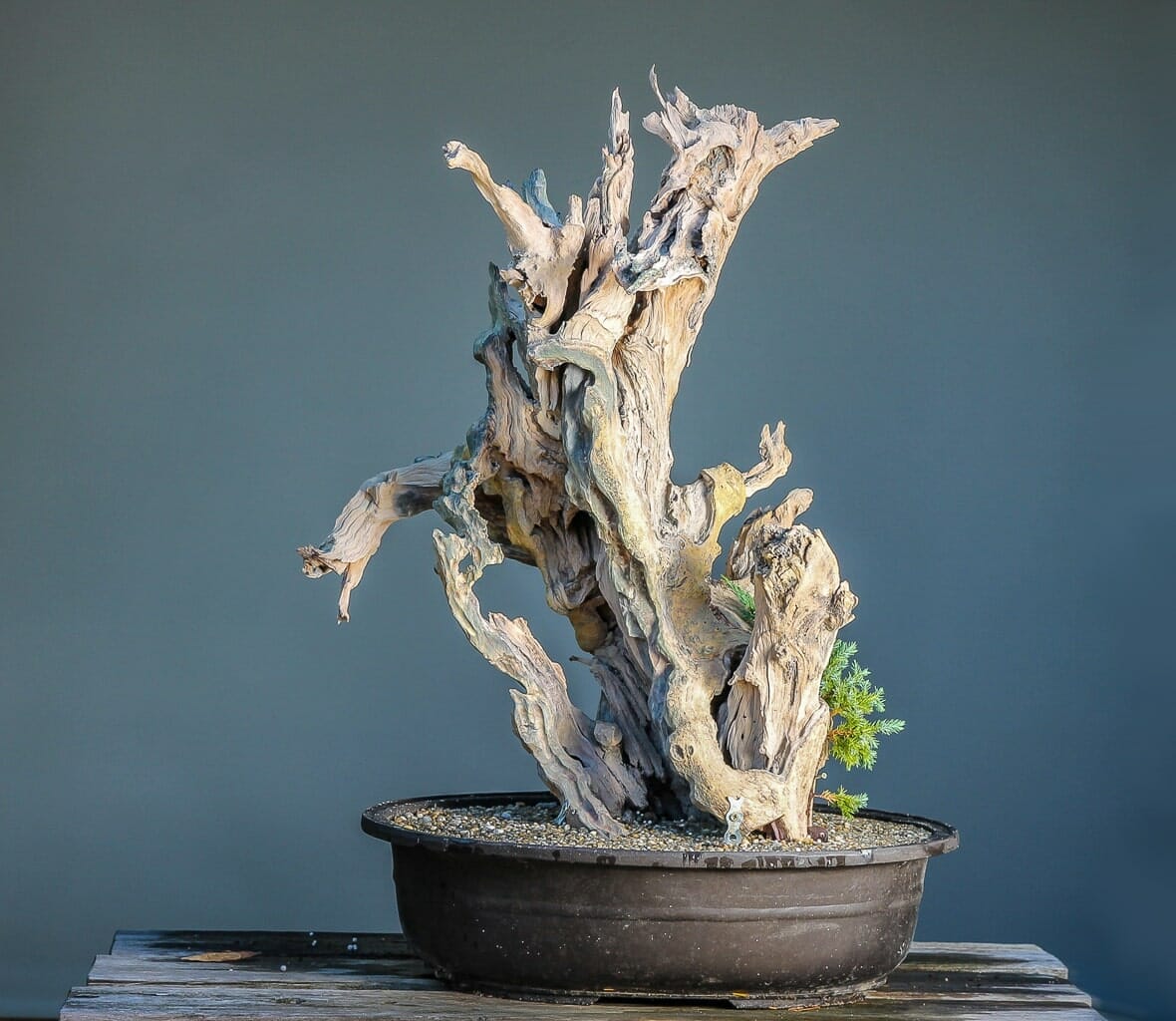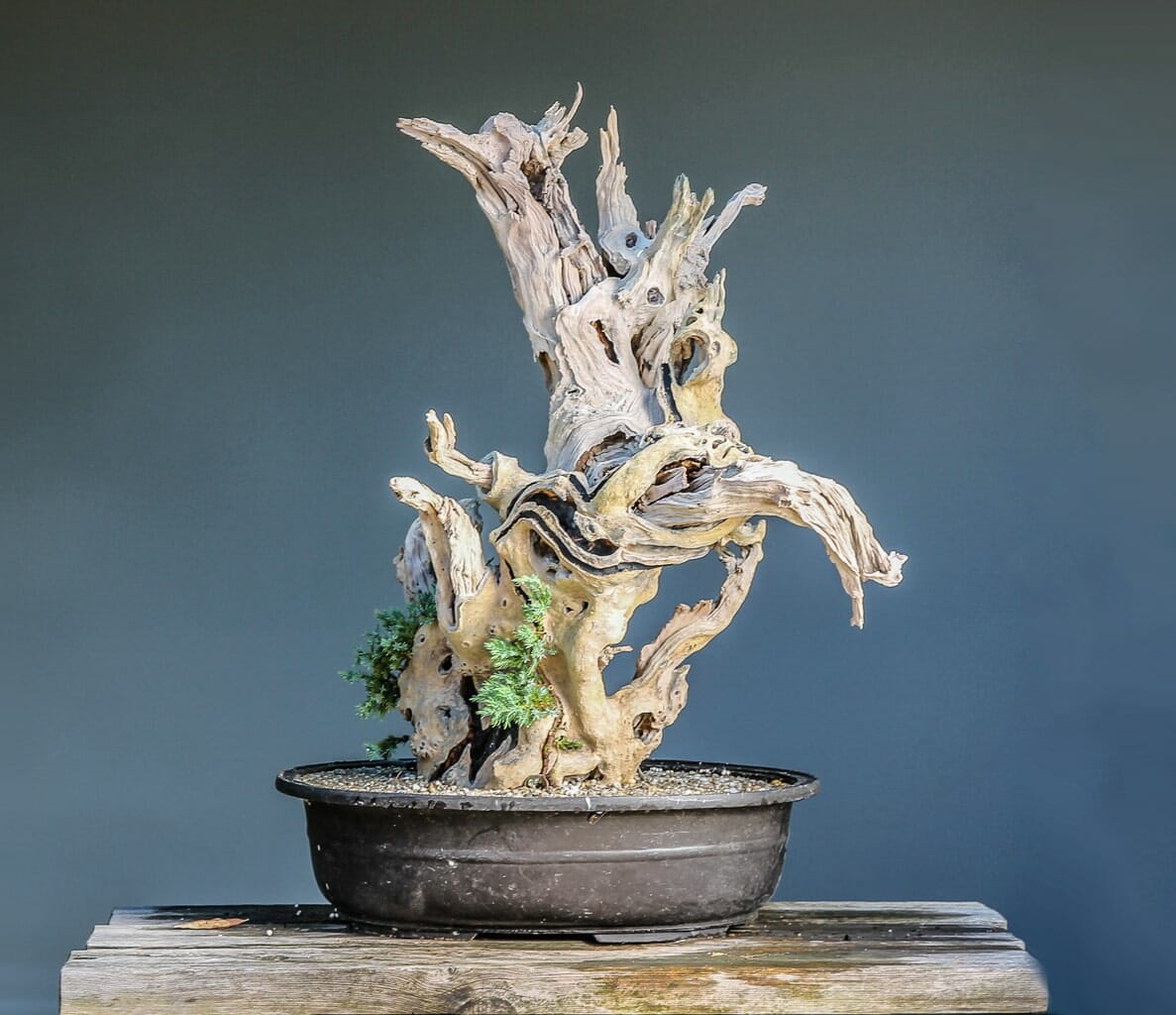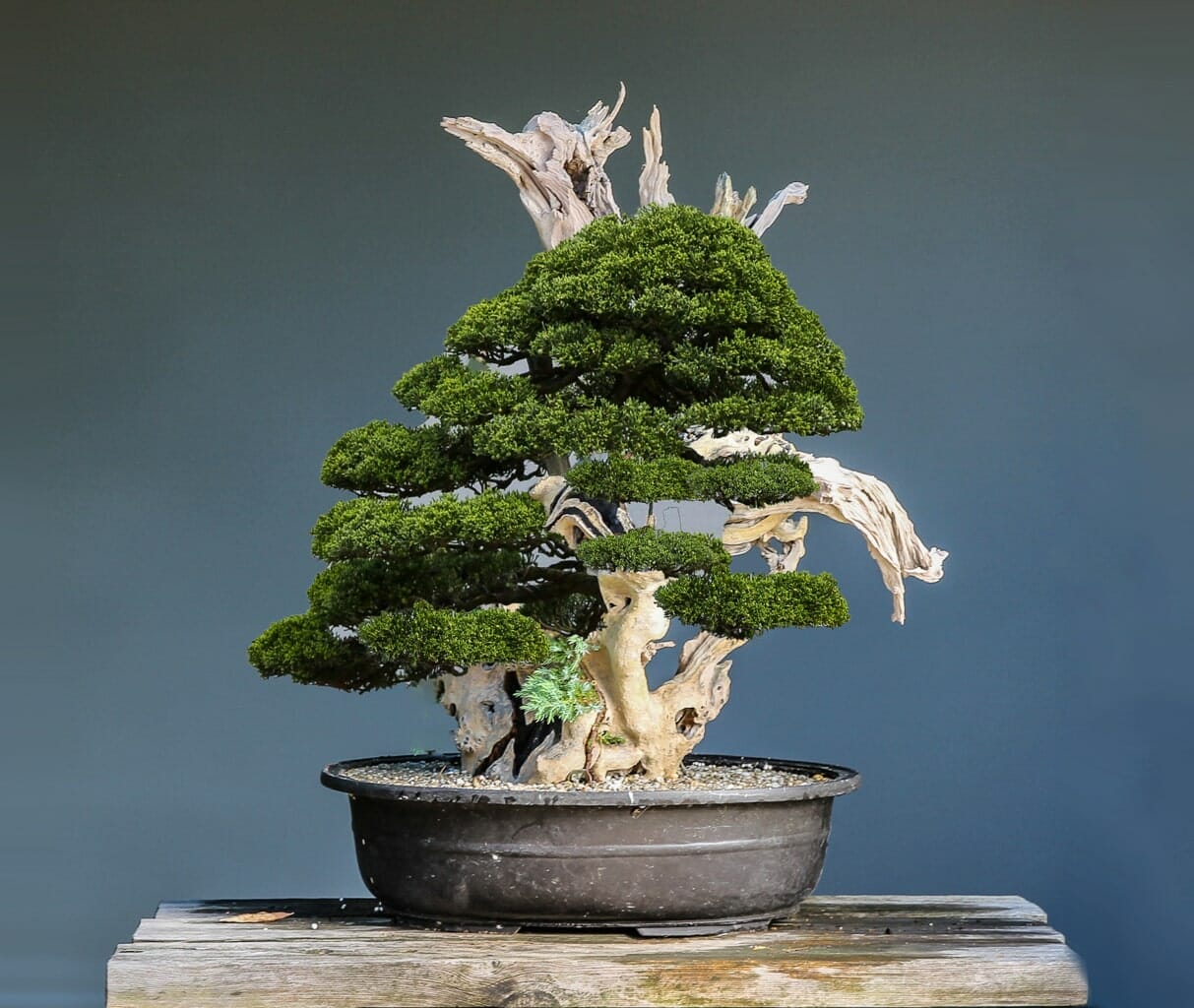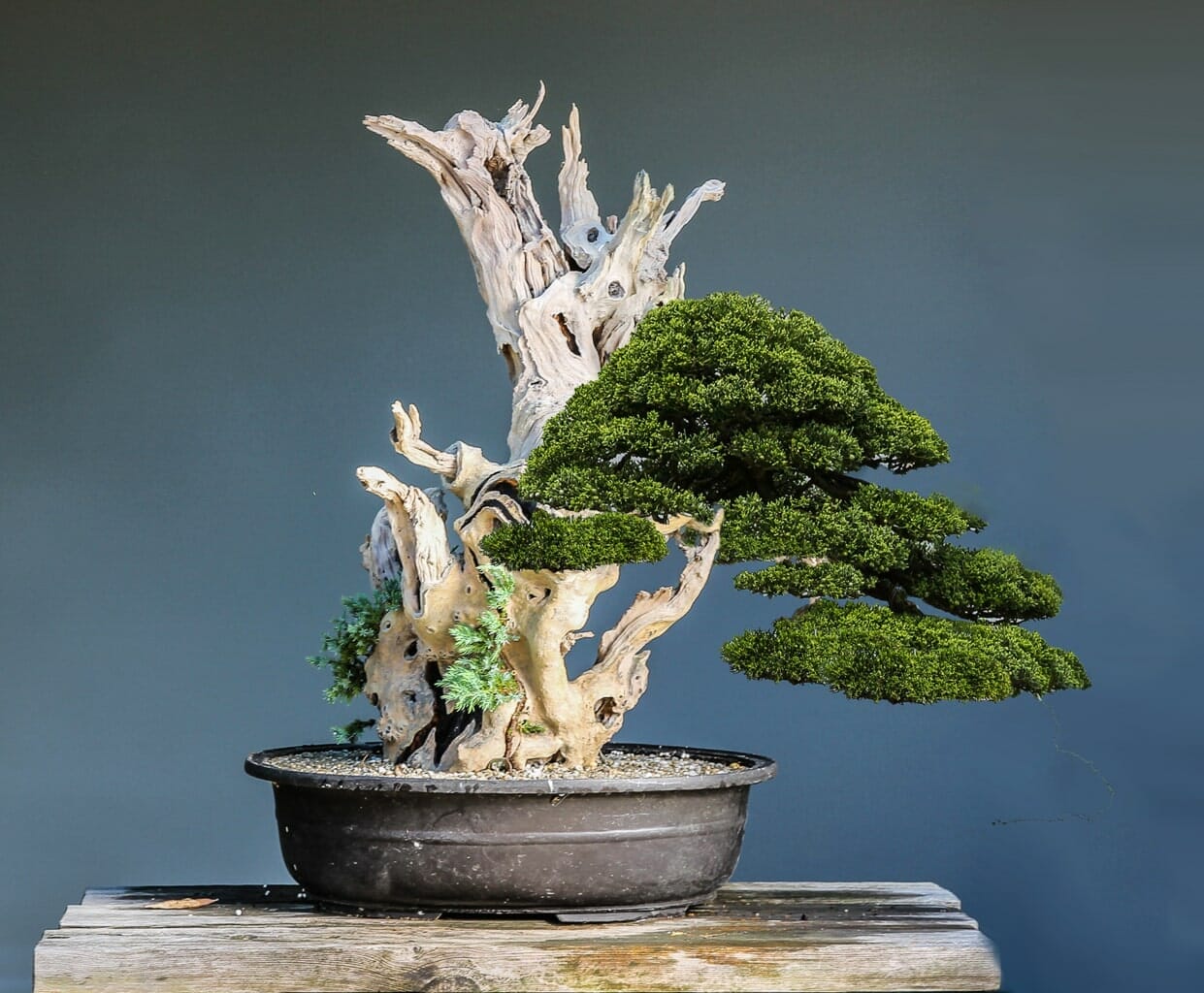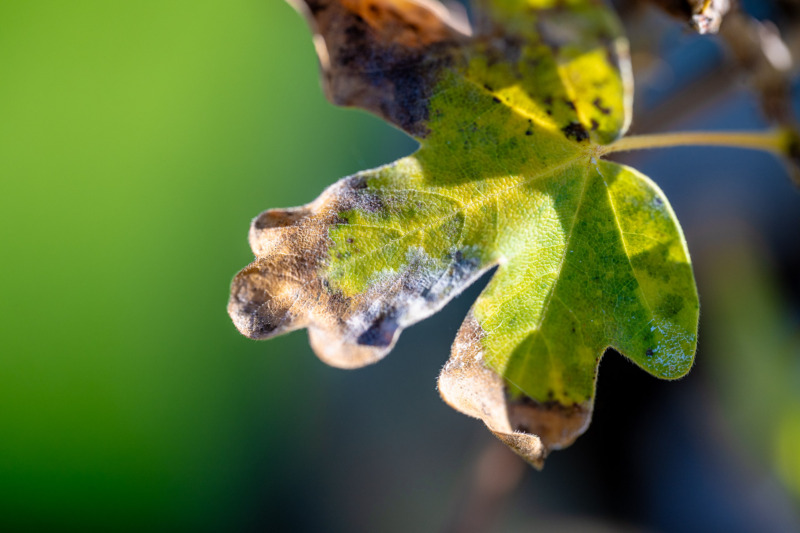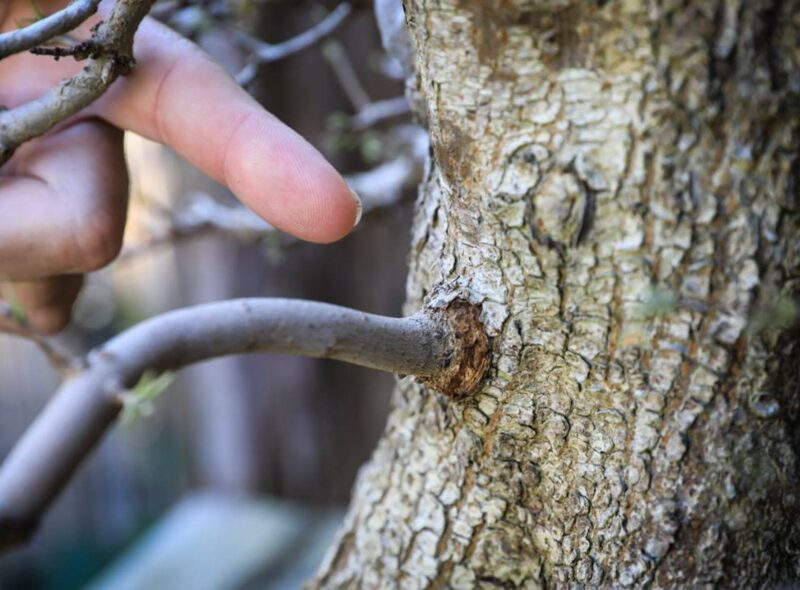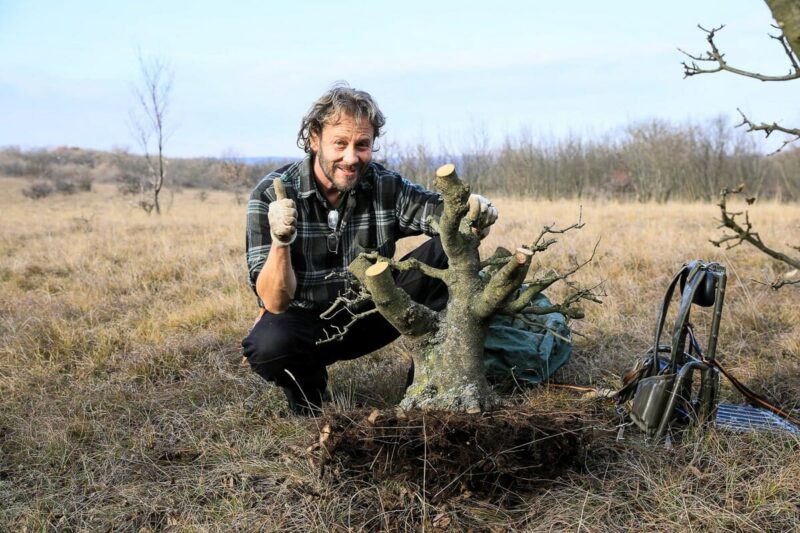Instructions
They usually have only a few living branches or are already completely dead. The dead branches are regularly removed by forestry workers, leaving plenty of dead wood that we can use for tanuki designs. The wood of the cornelian cherry is particularly thickened, grows very slowly and is therefore remarkably hard in its structure. We have planted several such tanuki trees as bonsai in pots. The oldest specimens have now been in the ground for around 15 years and show no signs of rotting. Due to the slow growth, injuries to the wood form interesting grain patterns. Such ideal deadwood for a bonsai may well be 100 years old or more. In this series of pictures, we now show how deadwood preparation works for a future structure.

